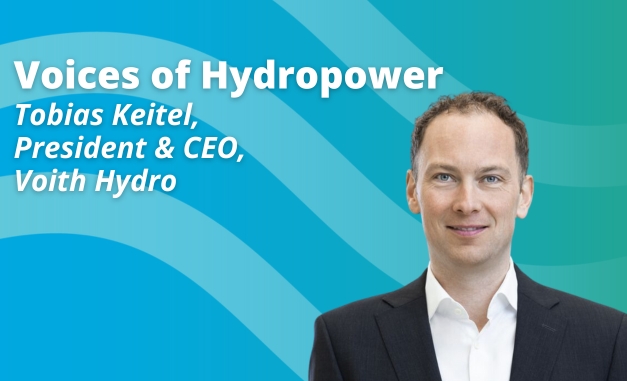Financing hydropower: tapping new sources of investment
1.3 billion people lack access to electricity. Two-thirds of the population in sub-Saharan Africa do not have access to electricity – one-third in India. This is the challenge that we are trying to overcome.

When you look at the bigger picture, it’s clear that hydropower is part of the solution. Less than a third of the economically viable hydropower projects in the developing world have been implemented so far. In Africa, 92 per cent of the economically viable projects have not been developed; that figure is 80 per cent in Asia and 74 per cent in Latin America.
According to data from UNEP, Bloomberg and IPCC SRREN, global investment in renewable energy is set to triple in the next twenty years, reaching over USD 700 billion by 2035. A large amount of this investment will be allocated to hydropower, but there are still very significant challenges in securing finance for these projects.
Although there are very large pools of private capital available, there is a relative shortage of fully-studied and bankable hydropower projects. This is a market failure – a disjuncture between the available capital and investment-ready projects.
Early stage risk capital
In response to this challenge, the International Finance Corporation (IFC) developed the InfraVentures programme, which provides upfront equity at the early stage of infrastructure projects. The idea is that IFC becomes a co-developer and partner, rather than just a passive lender expecting someone else to do all the work and come to us with a fully prepared project.
Let me give an example: the Upper Trishuli-1 hydropower scheme in Nepal, a 261 MW run-of-river project. We partnered with the Korea South East Power Company to co-develop this project, together bringing it to bankability. It’s a USD 500 million project, and IFC is investing around USD 4 million in the development phase.
It’s important to address potential issues from the very outset."
Providing this type of early stage risk capital is quite a novel approach for IFC. Even five years ago, if a developer came to us with a project where this initial work had not been completed, our typical response would be to say, “Ok, you need to do these five or six things – then come back to us in two years”.
We have now realised that this wasn’t particularly helpful. If we want to solve the challenges of investing in development infrastructure, especially in hydropower, we need to be willing to take an active role in the early stages of project development.
This is how IFC InfraVentures works: we provide essential support at the critical early stage of project development, helping the project mature from the idea stage through to bankability. We will actively assist project developers with the feasibility study, environmental impact assessment, contractual negotiations with governments, and so on.
This is because it’s important to address potential issues from the very outset. Will you be able to produce price competitive power at this site? How will you manage the environmental and social impacts?
Transparency is very important in this process. We are locked into these projects for a long time, sometimes several decades, so if someone has a problem it’s much better to know at the outset. Then you can try to understand the problem. You can address or mitigate any issues before you make the big capital investment.
Public-private partnerships
You also need involvement across the broad spectrum of stakeholders and investors. Unfortunately, there is a longstanding habit of viewing hydropower development as solely the prerogative of either the public or private sector.
Advocates for the public sector claim that hydropower development is so difficult and complex that it should remain exclusively in the domain of government. By contrast, advocates for the private sector claim that governments are not efficient enough, and therefore should not be meddling in these projects.
At IFC, we think it’s more complicated than that. We believe that governments do need to be actively involved in these projects – some of them would not ever be able to be built without strong government support. But we acknowledge that governments do not always have the resources to complete these projects on their own.
This is the first time bond holders have taken on construction risk for hydropower."
It’s crucial for the public and private sectors to work collaboratively in the hydropower sector. Every hydropower project that we have financed at IFC – over 70 in the last 20 years – has had a large government role.
So, at IFC, we try to carve out the commercial aspects of infrastructure, and, as much as possible, leverage in private capital. But it’s still very difficult to tap into capital markets – the pension funds, insurance funds, and so on – because they are generally not willing to take on risk at the planning and construction phases.
But there are signs of change. IFC has been involved in the Reventazon project in Costa Rica, a 305 MW station and the largest hydropower plant in Central America. The project has been financed with an unprecedented bank-bond funding structure. Tapping into capital markets, this is the first time bond holders have taken on construction risk for hydropower.
The project is financed jointly by a bond issue from the US market, IFC InfraVentures and the local utility, the Costa Rican Institute of Electricity (ICE). The total project cost is estimated to be around USD 1,400 million. Once built, the project will generate around 1,400 GWh each year, providing about 10 per cent of the country’s total electricity generation.
Attracting investment once a project is built is relatively easy. The challenge is financing the early planning and construction stages, which can often last around six to eight years. I think that tapping capital markets will be one of the most interesting long-term options for financing hydropower projects in the future.
You can find more information about IFC InfraVentures here.
You can read our interview with Morgan Landy on the challenges of hydropower financing here.










